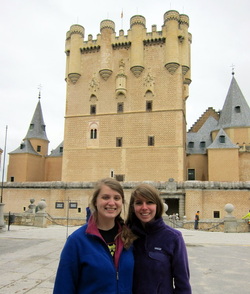 On Thursday, May 30th we took a trip to one of Segovia’s most celebrated landmarks, The Alcazar. The first record of the Alcazar of Segovia dates back to the 12th century. The design of the Alcazar features inspiration from many different cultures, including Arabic, Christian, Romanesque and Celtic. An example of this is the zigzag entrance to the castle. All castles of the Arabic tradition have zigzag entrances as a defense mechanism, preventing the easy entrance of the enemy’s armored horses.
One of the most impressive features of the Alcazar is the castle’s intricate ceiling of Arabic design. Perhaps the most impressive was the monarch’s room which featured sculptures of the past monarchs of Asturias, Castille and Leon. These historical rooms also boasted a breath taking view of the beautiful Segovian landscape. As you make your exit, you can’t help but notice the 140 foot drop into the castle’s medieval moat. Though now empty, it is still an intimidating sight and some of the group were afraid to look over the bridge. All in all, it was an exciting way to start off our Barcelona weekend!
Fun fact: The Alcazar of Segovia was the prime inspiration for the Cinderella castle in Disney World, Florida.
Jueves, el 30 de mayo, visitamos una de las más celebradas e históricas marcas de Segovia, El Alcázar. El primer registro del Alcázar de Segovia feu al iniicon del siglo 12. El diseño del Alcazar fue insiprado por muchas culturas diferentes, incluido el árabe, cristiana, románica y celta. Un ejemplo de esto es la entrada en zigzag al castillo. Todos los castillos de la tradición árabe tienen “zigzag” entradas como mecanismo de defense.
Una de las características más impresionantes del Alcázar es el techo complejo de diseño árabe. Lo más impresionante fue la sala de Reyes que tiene esculturas de los últimos monarcas de Asturias, Castilla y León. Estas salas históricas también tienen vistas bonitas del paisaje de Segovia. Cuando uno slae del castilo, no se puede dejar de notar la caída de 140 pies en el foso medieval del castillo. Aunque ahora vacío, sigue siendo un espectáculo intimidatorio y algunos del grupo se atrevieron a mirar por encima. En general, fue un buen modo de empezar nuestro fin de semana en Barcelona!
Dato curioso: El Alcázar de Segovia fue la inspiración principal para el castillo de Cenicienta en Disney World, Florida.
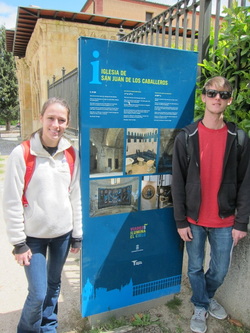 By Jesse Poovey and Sarah Walters
Wednesday, the 29th, we went to the Museo Zuloaga after class. Built in the 6th century, San Juan de los Caballeros is the oldest church in Segovia, which now is home to a museum of pottery and ceramics. In 1905, Daniel Zuloaga bought the abandoned church to convert it into his workshop. Here he made and sold pottery and other ceramics until his death in 1921. Zuloaga had four children, who all were a part of his business. His workshop was also used by another important ceramicist, Zuloaga’s nephew, Ignacio. Later, in 1955, the state bought the building to convert it into the museum.
It was very interesting to see such an ancient church in such good condition without much remodeling. The artwork and ceramic pottery was well preserved and the walk-through was well displayed. It was also interesting to see the sketches Zuloaga made during his time in the building. Overall, this was a very interesting and insightful look into a piece of the history of ceramic art in Segovia.
Miércoles, el 29 de mayo, fuimos al Museo Zuloaga después de clase. Construido en el siglo seis, San Juan de los Cabelleros es la iglesia más vieja en Segovia, la cual es la casa de un museo de alfarería y cerámica. En 1905, Daniel Zuloaga compró la iglesia abandonada para cambiarla a su taller. Aquí él hizo y vendió alfarería y cerámica hasta que se murió en 1921. Zuloaga tuvo cuatro hijos y fueron parte de su impresa también. Su taller fue usado por otro ceramista importante, su sobrino, Ignacio. Luego, en 1955, el estado compró el edificio para convertirlo en un museo.
Fue muy interesante ver una iglesia antigua en buenas condiciones sin mucha remodelación. Las obras de arte y cerámicas se han conservado bien y la gira mostró bien. Fue interesante ver los bocetos hizo por Zuloaga durante su duración en el edificio. De todas maneras, fue una gira muy interesante y perspicaz a la historia de arte cerámica en Segovia.
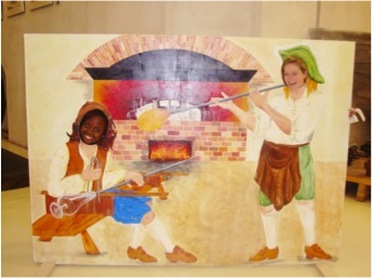
Today we went to La Granja, which is located about 25 minutes away from Segovia. The weather was cold and rainy. Fortunately our first destination, the Palacio Real, was inside. The Palacio Real used to be the king and queen of Spain's summer home from 1741 to 1971. The palace is modeled after the Palace of Versailles in France and it has some artifacts that were made in France, however, almost everything within the palace was made in Spain. Within the palace there are many Flemish tapestries from the 16th century. There are stunning paintings on every wall in the Palace of former nobility and on the ceiling there are famous frescos from the 18th century. Sadly in 1918, there was a fire in the palace that burned for 2 days. While the caretakers were able to save most of the paintings on the walls, there were a few rooms where the frescos had burned off.
After the Palacio Real we went to the glass factory. The glass factory was built near the palace because so much glass was needed for the Palacio Real. They acquired their glass making technique from the French and gathered their materials from northern Spain. Inside the factory, there are many types of glass in the form of art and cups. We were able to visit a workshop where they currently make glass - they use an oven to heat the glass and multiple workers to form each piece. In another part of the glass factory's museum we saw different parts of the old factory machinery. After seeing all of these amazing things, the weather was finally warm and sunny, so we were comfortable as we waited for our bus back to Segovia.
In general it was an incredibly informative and fun day for everyone!
Hoy, la clase visitó el Palacio Real y la Fábrica de Cristal en La Granja, un pueblo cerca de Segovia. Muy temprano, tomamos el autobús a La Granja y hacía mal tiempo. Estábamos muy aliviados a llegar al Palacio Real después de caminar en La Granja. En el Palacio, vimos muchas cosas muy antiguas y exquisitas. Estaba las tapices, muchas pinturas, las estatuas, los muebles, y los frescos. En unas partes del Palacio, no hay frescos porque hubo un incendio en al año 1918 que destruyó unas salas. Después del tour, caminamos en los jardines del Palacio. Vimos muchas fuentes – hay veintiséis fuentes en los jardines. También visitamos el embalse que suple agua a las fuentes.
En la tarde el tiempo hacía buen tiempo. Caminamos un poco en el pueblo y luego visitamos la Fábrica de Cristal. La Fábrica tiene una parte como un museo. Allí vimos vidrio en muchas formas – el arte, los espejos, y muchos vasos. El parte más interesante era cuando observamos personas haciendo de mano los vasos de cristal. Su talento es increíble.
En el fin del día, a pesar del mal tiempo, are un buena excursión y nos disfrutamos mucho.
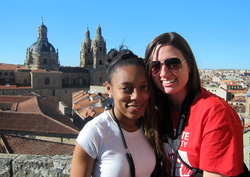 On Friday the 24th we left to spend the night in Salamanca, a larger city that is about 2 hours west of Segovia.
After a bus ride of siestas, we checked into a luxurious 5 star hotel called “Hotel Alameda Palace.” We quickly dropped our bags in our room and then left to explore the city. We immediately fell in love with Salamanca! We headed off to see the Plaza Mayor, which is one of the most well-known Plazas in Spain. The Plaza consists of four walls with a large open area in the center where both locals and tourists hangout. We also visited the Cathedral of Salamanca. It consists of an older Gothic section which was built in the 12th century and a newer Baroque section which was built in the 16th century. From the top of the cathedral we were able to see the skyline of Salamanca. We also spent time looking at the facades and architecture of the Universidad de Salamanca.
After some free time the group met in the hotel for dinner. The meal included spinach-stuffed canneloni and salmon with a slice of lemon cake for dessert. Later that night the group went out to view the beautifully lit Plaza Mayor and to experience a night in Salamanca.
On Saturday morning we went back to the cathedral for a more in depth look at the structure of the interior. After eating lunch in Salamanca we left for Avila, which was about 45 minutes away. Avila is most known for its well-conserved medieval wall surrounding the city. We stayed in the city just long enough to take pictures and explore. Some of the group ventured to the top of the wall for some amazing sites while others chose to rest in the Plaza Mayor.
Upon returning to Segovia at 7:30 in the evening we were all grateful for the weekend excursion, but we were excited to be back in Segovia to rest!
Y ahora...¡en español!
Viernes, el 24, salimos para quedarnos una noche en Salamanca, una ciudad grande que está dos horas al oeste de Segovia.
Después de siestas en el autobús, firmamos el registro en un hótel lujoso de 5 estrellas que se llama “Hotel Alameda Palace.” Luego, fuimos a la Catedral de Salamanca que consiste de una parte antigua y otra nueva. También, vimos las fachadas de la Universidad de Salamanca y la Plaza Mayor que es muy famosa por tener mucha gente. Cenamos en el hotel y fuimos por la noche para ver la ciudad.
El sábado visitamos la catedral otra vez para ver el interior. Almorzamos en Salamanca y después salimos para otra ciudad que se llama Ávila. La ciudad es bien-conocida para la muralla medieval bien-conservada. Allí pasamos tiempo en la plaza mayor y tomamos unas fotos por la muralla.
Regresamos a Segovia a las 7:30 por la noche. Disfrutamos mucho nuestra excursión, pero a la misma vez nos pusimos alegres de devolver a nuestras casas en Segovia.
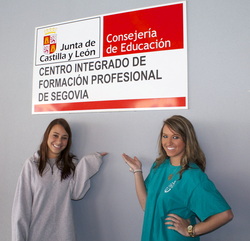 Thursday, May 23rd, our class took a trip to New Segovia to take a cooking class at the vocational school there. The school offers majors such as cooking, hospitality & tourism, English, and cosmetology. Bernardo, the chef, taught our class the basics of making Paella. Paella is a dish that is a Spanish favorite that contains rice, seafood, mushrooms, chicken, peppers and a type of stock. Bernardo instructed us on the process of making Paella and gave us all a chance to cook. After sautéing the chicken and peppers in two large pans, we added the shrimp with its complete shell. The shell of the shrimp is kept on in order to add to the flavor of the dish. Next, we added muscles, garlic, tomato sauce, wild mushrooms, and red & green peppers. After cooking all of these ingredients together, we added the rice, followed by the fish stock that is used to cook the rice. In order to solidify the dish, Bernardo added a special step in which you put the dish in the oven until it is done cooking. After we all tried and enjoyed the Paella, we met some of the students who attended the school. They practiced their English with us, while we practiced our Spanish with them and also made some new friends. We all had a great day and learned how to make an exceptional dish that we can now cook for our families in America.
Si hablas español...
Jueves, 23 de mayo, la clase hizo un viaje a Nueva Segovia para tomar una clase de cocina en la escuela vocacional allí. La escuela ofrece especialidades como cocina, hostelería y turismo, inglés, y cosmetología. Bernardo, el chef, enseñó a nuestra clase los fundamentos de hacer paella. La paella es un plato que es uno de los favoritos españoles que contiene arroz, mariscos, champiñones, pollo, pimientos y un tipo de caldo. Bernardo nos instruyó en el proceso de hacer paella y nos dio a todos la oportunidad de cocinar. Después de saltear el pollo y los pimientos en dos grandes paelleras, añadimos las gambas con su concha completa. La concha de los camarones se mantiene para añadir el sabor al plato. A continuación, añadimos los mejillones, ajo, salsa de tomate, setas y pimientos rojos y verdes. Después de la cocción todos estos ingredientes juntos, añadimos el arroz, seguido de caldo de pescado que se utiliza para cocinar el arroz. Para solidificar el plato, Bernardo añade una paso especial en el que se pone el plato en el horno hasta que se hace la cocción. Después de que todos probamos y disfrutamos de la Paella, nos encontramos con algunos de los estudiantes que asistieron a la escuela. Ellos practicaron su inglés con nosotros, mientras practicamos nuestro español con ellos y también hicimos algunos nuevos amigos. Todos tuvimos un gran día y aprendimos a hacer un plato excepcional que ahora podemos cocinar para nuestras familias en los Estados Unidos.
 The first stop of our excursion was a monastery in Santa Maria La Real de Nieva. There were several large columns that surrounded the monastery, each topped with a religious image or symbol. We learned that Lilies symbolize the purity of the Virgin Mary and hunting lions symbolize the killing original sin. Although the monastery was built in a Romantic style, there was a gothic influence in the arches of the columns. We learned a lot about the religious art and symbolism in the monastery.
After the monastery, we went to a winery that is famous for their white wines. We studied the machinery and learned about the engineering behind the winemaking process. We learned about one machine in particular that would slightly pop the grapes and then apply pressure to release the liquid. Nitrogen is then pumped into the mixture to prevent oxidation of the wine. In large tanks, the sediment is separated from the liquid by the force of gravity. Next, the temperature is lowered to prevent the natural yeasts from fermenting for too long. Clay is then added to attract the proteins in the wine to reduce the cloudiness and clarify the wine. We also learned that the salt byproducts from the process are sold to makeup companies for exfoliants.
Our next stop was visiting a restored castle in Coca. The first room in the castle was an adoration room with pews and a tabernacle. We then climbed up the winding stairwells to explore the other rooms of the castle. One of the rooms we visited reminded us of the Wolves Ears at NC State. In the room, we stood far away from a friend and talked into the wall and we could hear each other perfectly. We continued climbing to the roof of the castle where we could see for miles in every direction. Even in the rain, the view was spectacular.
After lots of exploring, we were all ready for a delicious lunch. We ate lunch in a small town called Turegano. We ate lamb and gazpacho, traditional meals in that region. We drank red wine with gaseosa, which slightly carbonated our beverages. This is very Spanish and makes it able for you to drink a glass of wine without getting intoxicated. For dessert, we enjoyed home made Flan.
After lunch we went to Pedraza, a city surrounded entirely by walls with only one door. While we walked up, each car entering and leaving the city had to take turns driving through the door. We walked around the city and took lots of photographs. It was really interesting to see so many old castles because there is nothing like that at home in the United States.
After a long day at the Monastery, the Winery, and La Ruta de los Castillos, everyone was ready for a well-earned siesta!
Si hablas español, sigue leyendo…
Ayer, fuimos a un monasterio para estudiar todos los imágenes y símbolos religiosos en los capiteles. Nos gustó aprender sobre el estilo de la arquitectura y como es románico pero los arcos son góticos. Después, fuimos a un viñedo y una bodega para aprender sobre los vinos. Aprendimos cómo funcionan las máquinas y cómo se producen los productos. Probamos los varios tipos de vino y nos gustaron mucho. Luego pasamos mucho tiempo en La Ruta de los Castillos. Aunque llovía mucho, nos divertimos porque no hay nada como los castillos antiguos en los Estados Unidos. Fue muy interesante y aprendimos mucho sobre los castillos. Después de mucho ejercicio caminando en los castillos, teníamos mucho hambre. Almorzamos en un restaurante y comimos cordero y gazpacho, comida típica de esa región. Luego, visitamos una cuidad con murallas en su alrededor y solo una puerta. La excursión fue muy impresionante y una nueva experiencia muy divertida para todos.
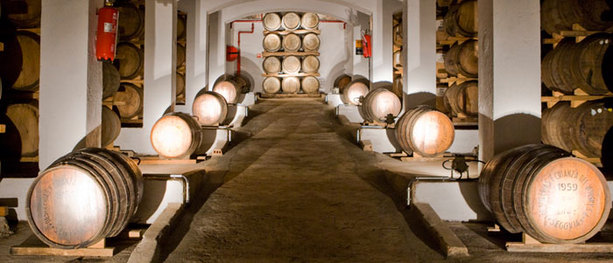 On our second excursion, we visited SGD La Granja which is an international business that produces many types of glass containers used for perfume and other hygienic products. As we learned in the beginning introduction, the glass is primarily composed of silicon and calcium carbonate.
This factory uses constantly running machinery that melts the glass to a scolding 1,300 degrees Celsius. Once the raw materials are heated to this extent, the liquid glass is poured through a cutting mechanism that separates the material into even distributions for the particular molds. The bright orange glass fits perfectly into the molds where it is shaped and then placed onto the consistently moving conveyer belt. As the bottle-shaped products move along the conveyor belt, we learned that they are passed through open flames to keep them from cooling too fast which prevents cracking. Due to these open flames, the employees must use extreme caution when working through these areas. Although the machines actually make the glass, the employees are needed to make sure the products are being produced consistently to size and weight. After moving through a loud machinery room, we were able to visit the brains of the operation in the control room. The systems in this room seemed very complex and needed much attention by a handful of employees. It was a very intriguing experience which was greatly appreciated and educational.
After the glass factory we got back on the bus to go eat lunch in Palazuelos. We were treated with delicious courses: our choice of pasta or a spanish style bread soup, as well as another choice of salad, veal or chicken. It has been a great experience to get out of our American lifestyles and taste some foreign foods. So far, the restaurants we have been to have yet to let us down. ¡Muy delicioso!
With some food in our stomachs, we were ready to learn a little more about the process of making whiskey. Distilación Y Crianza S.A. (Distillation & Raising of Whiskey) is the name of the whiskey factory that we had the pleasure of visiting. Formerly known as DYC, the factory began in 1958 under the entrepreneur named Nicomedes Garcia Gómez. Being the first distillery to make Whiskey in Spain, DYC is famous for being one of the few distilleries in the world to grow their own barley. We learned that there are several steps to producing whiskey. Using barley, fresh stream water, and yeast, DYC malts, grinds, brews, ferments, and then double distills in copper containers to produce about a 70% alcohol spirit. These spirits are then aged for at least three years. The brownish tint and distinct odor of the whiskey comes from the wood of the barrels. While in the barrels the whiskey loses a small share of alcohol which is known as the “Angel’s Share”. Before bottling, we learned that they mix the aged whiskey with water to reduce the alcohol percentage to a minimum of 40%. At the end of the tour, we were able to finally taste the products that we had been learning about.
Two fascinating tours of prosperous companies and a great lunch made the day an experience that we will never forget. Not to mention, the day was accompanied by the best weather we had seen yet!
Para Hispanohablantes:
La segunda excursión que realizamos consistió en una fábrica de cristal, una buena comida y una gira por la primera destilería del whiskey de España. Nos enteramos de que la fábrica de vidrio, SGD La Granja, hace los frascos para perfumes, cosméticos y mucho más. La maquinaria es complejo e increíble. Nos sorprendió saber que las máquinas están constantemente trabajando. Luego, el almuerzo era absolutamente delicioso. Los cursos fueron nuestra elección de la pasta, sopa, ternera, y pollo acompañado con un postre. Entonces, hemos podido recorrer una fábrica de whiskey. La fábrica, DYC Whiskey, fue fundada en 1958 por Nicomedes García Gómez. Los españoles están muy orgullosos de este whisky. Esta excursión estaba lleno de grandes recuerdos, conocimientos y buena gente. ¡Viva España!
|





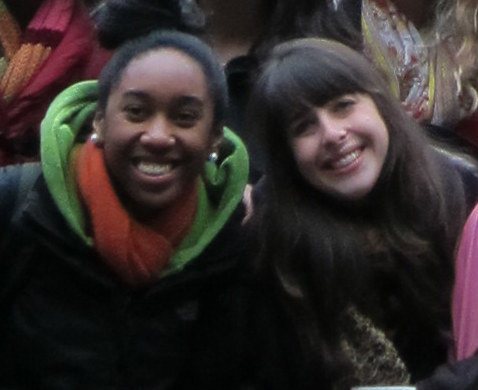

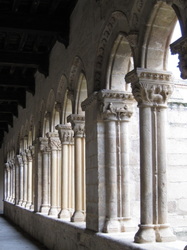
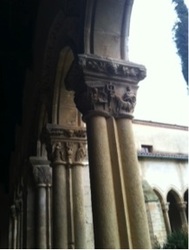
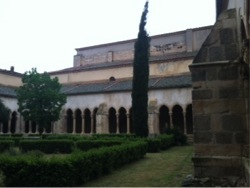
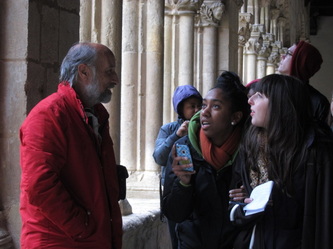
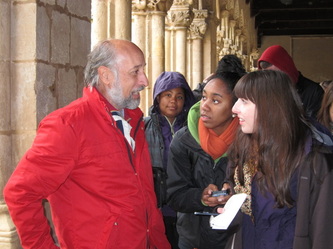
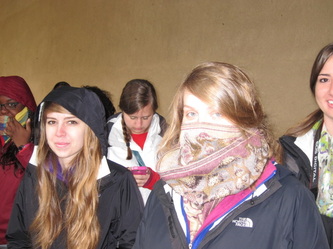
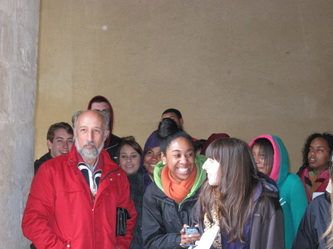
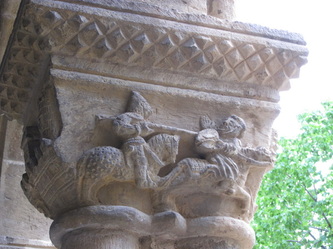
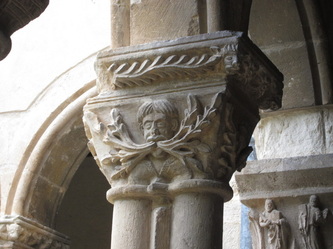
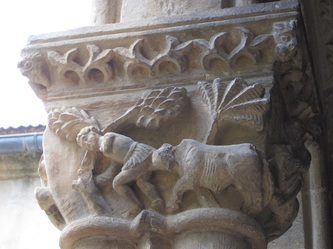
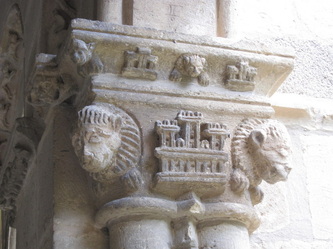
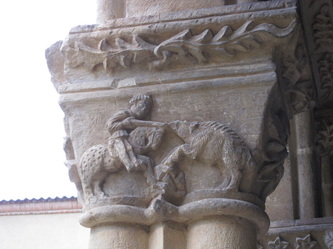
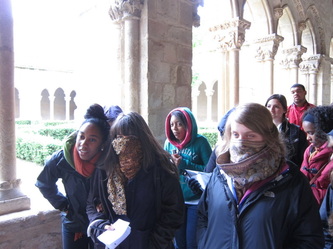
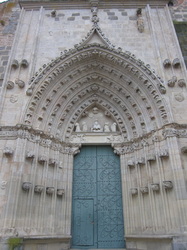
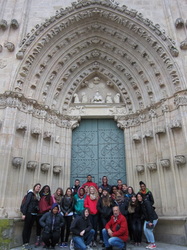
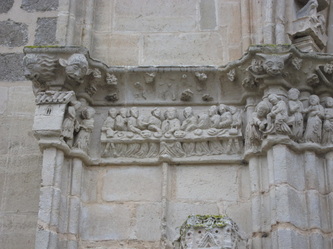
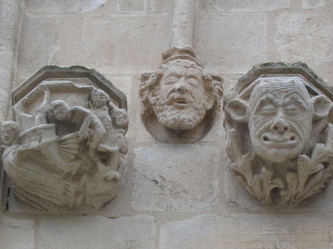
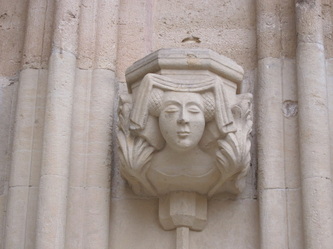
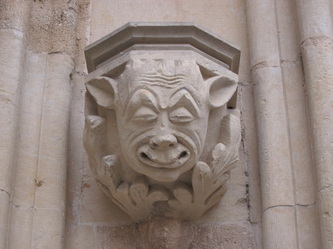
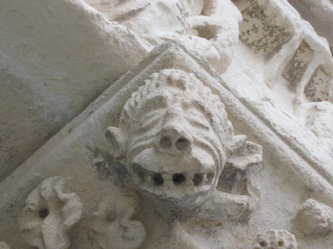
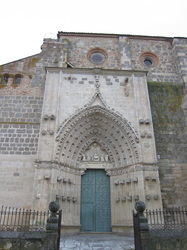
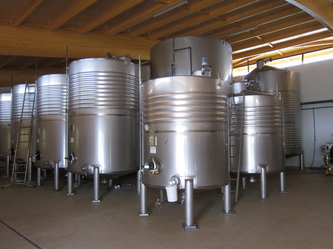
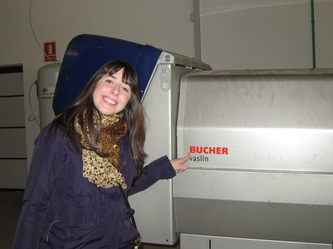
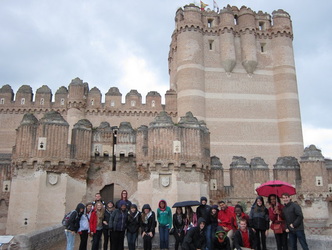
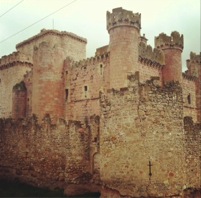
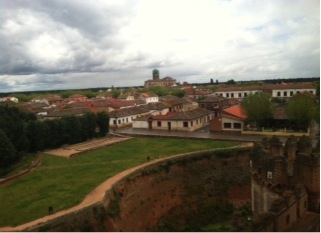
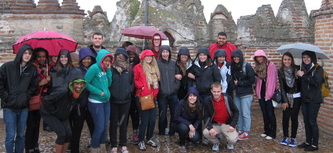
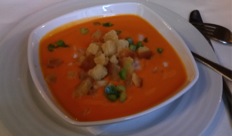
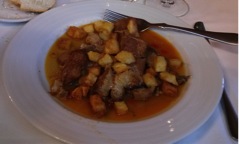
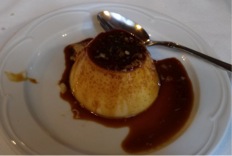
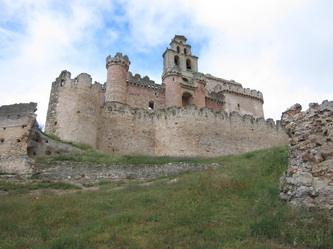
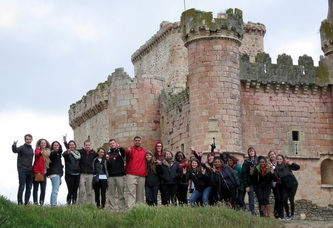
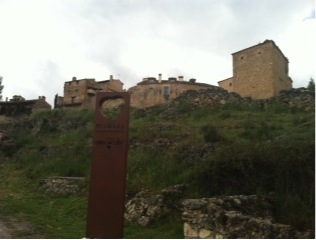

 RSS Feed
RSS Feed